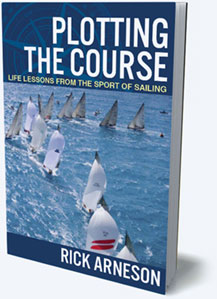Resources
Interested in learning to sail? Check out these helpful resources:
Web links
American Sailing Association
United States Sailing Association
World Sailing
Books
Sailing for Dummies by JJ Fetter Isler and Peter Isler
Sailing Fundamentals by Gary Jobson
The Annapolis Book of Seamanship by John Rousmaniere
The Complete Sailing Manual by DK Publishing
The International Marine Book of Sailing by Robby Robinson
Competitive Sailing-A Big Picture View
The sport of sailing takes many faces throughout the world. Below are some brief descriptions of some of the various formats that sailors enjoy, with some recommended video links.
One-Design Sailing
There are hundreds of one-design classes racing today. The principle of one-design sailing is to have a fleet of competitors in boats that are nearly identical in construction, while the subtle differences in tuning and technique are left up to the sailors in order to find an advantage. One-design classes can be of virtually any size, but most consist of one- or two-man dinghies or small keelboats. Olympic competition is entirely contested in various one-design classes.
Match Racing
Match racing is a one-on-one contest between two boats. Using a round-robin format in which each boat races against all other challengers one at a time, multiple teams compete to score enough points to reach and ultimately win the finals. The most well-known match racing competition is the America’s Cup.
College Sailing
While regatta formats can vary in different areas, multiple universities compete against each other in organized regattas, racing singlehanded dinghies, doublehanded dinghies, or keelboats. Popular formats for intercollegiate competition include fleet racing, match racing, and team racing.
Team Racing
Team racing is generally a three-on-three contest between two teams in identical boats. Using aggressive tactics, individual boats will maneuver in such a way as to put their own team into a winning combination, even if it means slowing themselves down to do so. The team with the lowest score of combined finishes wins the race.
Offshore Racing
Long-distance ocean racing can reach across an ocean or even around the world, generally contested in larger keelboats. Time is kept to note any speed records that may be set. Some notable offshore races include the Volvo Ocean Race, the Transpac, and the Sydney to Hobart Race.
Classic Yachting
For purists and romantics alike, racing aboard a classic yacht offers modern competition in the spirit of yesteryear. Wooden boats whose construction date back generations continue to race in events around the world today.
PHRF
A common format of racing the world over, the Performance Handicap Rating Formula allows boats of various size and conception to race against each other and be scored together through time allowances determined by a formula, which takes into account elements of each yacht’s design. A faster boat may cross the finish line far ahead of a smaller, slower boat, but if the slower boat can exceed their rating by finishing the race faster than expected, they may beat the faster boat in the standings. Club races are often scored under the PHRF format to encourage participation.
The Sailing Speed Record
The most open of sailing contests in terms of design, sailors wishing to challenge for the fastest speed under sail have free reign to create any craft they can imagine in order to set a new record. The most recent designs rarely resemble conventional sailboats, but the speed they can be capable of is spectacular. The current record (as of November 2012) is approximately 68 mph. Challenges to the record go through the World Sailing Speed Record Council, in order to keep the record official.
Multihull Sailing
Catamarans and trimarans have gained in popularity due to their speed and stability. Multihulls have been setting speed records in ocean racing for decades, and have also been sailed in America’s Cup competition.
Skiff Sailing
Skiffs are lightweight, overpowered sailboats capable of high speeds. Popularized in Australia over a century ago with the 18-foot skiffs still competing today, various other skiff designs have proliferated over the years throughout the world. Skiff racing first entered the Olympics with the 49er class in 2000.
Windsurfing
The concept of putting a sail on a surfboard is quite old, but it wasn’t until 1984 that windsurfing was introduced in the Olympics. Three common types of board used competitively are: wave boards, which are shorter and used for performing stunts in high surf, slalom boards, which are designed for high-speed reaches, and one design boards, which are longer and are used for upwind and downwind racing around a conventional course.
Kiteboarding
Also known as kitesurfing, the sailor keeps his feet in the toestraps of a board about the size of a typical snowboard, while harnessed to a large kite. The speed and jumping capabilities of the kiteboard make this a thrilling recreational sport, and course racing continues to gain in popularity.
Disabled Sailing
One-designs can be outfitted to allow sailors with physical limitations to operate them for racing. Sailors at the Paralympic Games have competed despite a range of physical challenges, such as degenerative nerve disease, paralysis, blindness, polio, and missing limbs.
Model Yachting
Small model yachts can be raced by remote control, while the owners operate their boats from the nearby shore or dock. Model yachts may look like toys, but they are actually very intricate and sophisticated. This is one of the few formats of sailing that allows the skipper to stay dry the whole time.
Land Sailing
Land yachts are small, one-man wheeled vehicles that are propelled over dry land by the use of a sail. These landsailors come in various classes and sizes, and can achieve high speeds, often approaching, or exceeding, 100 mph. Racing is popular in Europe and South America, as well as the American Southwest.
Iceboating
Iceboats are usually T-shaped one-man sleds, steered by foot pedals while a sail is trimmed by hand. This incarnation of the sport is popular in areas where a sailing locale can freeze over in the winter, such as Europe, Scandinavia, and the American Midwest. Like land yachts, iceboats don’t need much sail area, as they can achieve very high speeds in fresh breeze.







